Themed collection Host-Guest Chemistry

Recent update on the electroactive oligopyrrolic macrocyclic hosts with a Bucky-ball heart
Host–guest supramolecular ensembles constructed by various electroactive oligopyrrolic molecular containers capable of spherical guest (e.g., Buckminster fullerenes) complexation are described in this Feature Article.
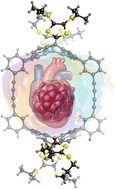
Chem. Commun., 2023,59, 12972-12985
https://doi.org/10.1039/D3CC04028C
Calixarene-mediated host–guest interactions leading to supramolecular assemblies: visualization by microscopy
Supramolecular host–guest chemistry of calixarenes has been well explored based on spectroscopy, though their architectures can only be revealed through microscopy. Therefore, this article brings out microscopy features into light in a comparative manner.
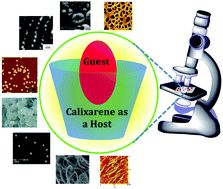
Chem. Commun., 2022,58, 6044-6063
https://doi.org/10.1039/D2CC01850K
Controlled release of drug molecules by pillararene-modified nanosystems
In this review, we summarize the advance of stimuli-responsive pillararene modified nanosystems for controlled release of drugs from the perspectives of decomposition release and gated release, and describe in detail the controlled release of recently developed photo-, pH-, thermal-, chemical- and multi-responsive nanosystems.

Chem. Commun., 2022,58, 3255-3269
https://doi.org/10.1039/D1CC05584D
Molecular tweezers – a new class of potent broad-spectrum antivirals against enveloped viruses
The molecular tweezer CLR01 binds to the choline head group of phospholipids inside lipid rafts, raises local surface tension and thus disrupts viral membranes.
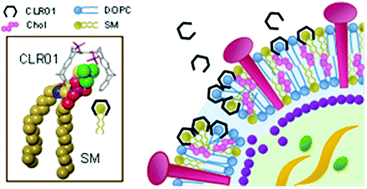
Chem. Commun., 2022,58, 2954-2966
https://doi.org/10.1039/D1CC06737K
Supramolecular helices from helical building blocks via head-to-tail intermolecular interactions
Helical building blocks can self-assemble into supramolecular helices via head-to-tail intermolecular interactions, wherein good propagation of helicity operates, exhibiting favourable homochiral elongation and functional helical channel structures.
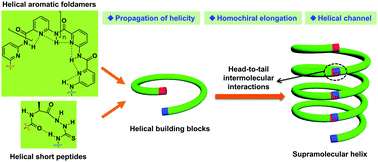
Chem. Commun., 2021,57, 12562-12574
https://doi.org/10.1039/D1CC04991G
Macrocyclic host molecules with aromatic building blocks: the state of the art and progress
The diversity of aromatic building blocks, bridging groups, and their connection patterns determines the richness of macrocyclic host molecules (MHMs). The MHMs with new aromatic building blocks reported in the last ten years were summarized and discussed.
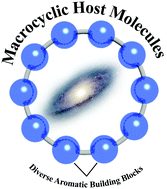
Chem. Commun., 2021,57, 12379-12405
https://doi.org/10.1039/D1CC04400A
Metal–organic frameworks (MOFs) as host materials for the enhanced delivery of biomacromolecular therapeutics
We summarize recent progress in the enhanced delivery of biomacromolecular therapeutics for disease treatment using metal–organic frameworks (MOFs) as host materials.
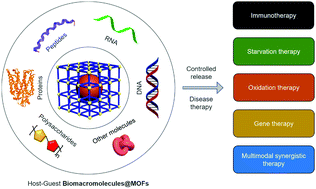
Chem. Commun., 2021,57, 12098-12110
https://doi.org/10.1039/D1CC05157A
Covalently bridged pillararene-based oligomers: from construction to applications
This feature article reviews the structural design, synthetic methods, and multi-field applications of covalently bridged pillararene-based oligomers (CBPOs).
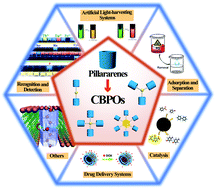
Chem. Commun., 2021,57, 10983-10997
https://doi.org/10.1039/D1CC04547D
Keggin-type polyoxometalate-based crown ether complex for lithium–sulfur batteries
A novel supramolecular assembly built from Keggin-type polyoxometalates and [18]crown-6 ether building blocks was first applied as sulfur host in lithium–sulfur batteries to resolve remaining critical challenge of polysulfide shuttle effect.

Chem. Commun., 2023,59, 788-791
https://doi.org/10.1039/D2CC05904E
Highly selective molecular sieving of cis- over trans-1,2-dichloroethene isomers
An economic and energy-efficient adsorptive molecular sieving approach is demonstrated for the separation of the cis-DCE isomer with a purity of ∼96% using trianglimine macrocycles.

Chem. Commun., 2022,58, 9369-9372
https://doi.org/10.1039/D2CC03574J
Pillar[5]arene-based [1]rotaxanes with salicylaldimine as the stopper: synthesis, characterization and application in the fluorescence turn-on sensing of Zn2+ in water
Unexpected strongly luminescent complexes were constructed via the weakly luminescent [1]rotaxane coordinating with Zn2+ specifically due to the coordination-induced emission effect.
![Graphical abstract: Pillar[5]arene-based [1]rotaxanes with salicylaldimine as the stopper: synthesis, characterization and application in the fluorescence turn-on sensing of Zn2+ in water](/en/Image/Get?imageInfo.ImageType=GA&imageInfo.ImageIdentifier.ManuscriptID=D2CC02893J&imageInfo.ImageIdentifier.Year=2022)
Chem. Commun., 2022,58, 8978-8981
https://doi.org/10.1039/D2CC02893J
Calix[6]arenes with halogen bond donor groups as selective and efficient anion transporters
A calix[6]arene with three preorganised halogen bond donating groups gives >100-fold selectivity for Cl− uniport over HCl symport, in contrast to analogous compounds with strong hydrogen bond donating groups.
![Graphical abstract: Calix[6]arenes with halogen bond donor groups as selective and efficient anion transporters](/en/Image/Get?imageInfo.ImageType=GA&imageInfo.ImageIdentifier.ManuscriptID=D2CC00847E&imageInfo.ImageIdentifier.Year=2022)
Chem. Commun., 2022,58, 6255-6258
https://doi.org/10.1039/D2CC00847E
Host–guest chemistry under confinement: peeking at early self-assembly events
Nanoscopic lateral confinement created on a graphite surface enabled the study of embryonic stages of molecular self-assembly on solid surfaces using scanning tunneling microscopy performed at the solution/solid interface.
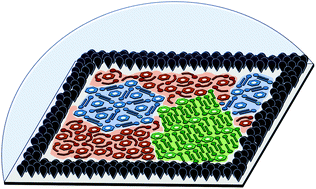
Chem. Commun., 2022,58, 3138-3141
https://doi.org/10.1039/D1CC07206D
semiaza-Bambusurils are anion-specific transmembrane transporters
The most efficient anion transporters are those that agree with Lipinski's rule-of-lipophilicity, exhibiting a partition coefficient (clog Po/w) close to 5.
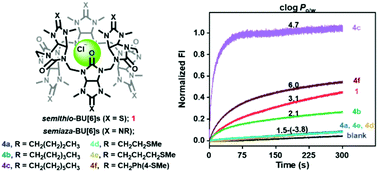
Chem. Commun., 2022,58, 3150-3153
https://doi.org/10.1039/D2CC00144F
A dipodal bimane–ditriazole–diCu(II) complex serves as an ultrasensitive water sensor
A bimane ditriazole–copper(II) complex serves as an ultrasensitive water sensor. Key features of the system also include rapid response times and good selectivity for water compared to other protic solvents.
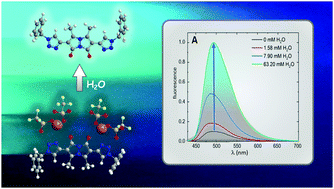
Chem. Commun., 2022,58, 2690-2693
https://doi.org/10.1039/D1CC07138F
Rim-differentiated pillar[5]arene based nonporous adaptive crystals
An easy to operate and energy-saving adsorptive separation method using nonporous adaptive crystals of rim-differentiated pillar[5]arene (RDP[5]) was developed. The adaptive RDP[5] crystals separate dichloromethane from a halomethane mixture with 99.1% purity.
![Graphical abstract: Rim-differentiated pillar[5]arene based nonporous adaptive crystals](/en/Image/Get?imageInfo.ImageType=GA&imageInfo.ImageIdentifier.ManuscriptID=D1CC07124F&imageInfo.ImageIdentifier.Year=2022)
Chem. Commun., 2022,58, 2480-2483
https://doi.org/10.1039/D1CC07124F
Synthesis of a large-cavity carbazole macrocycle for size-dependent recognition
A large-sized carbazole macrocycle shows size-dependent recognition towards large-volume tetrapropylammonium salts.

Chem. Commun., 2022,58, 2319-2322
https://doi.org/10.1039/D1CC06788E
Rotaxane-branched radical dendrimers with TEMPO termini
The precise synthesis of novel rotaxane-branched radical dendrimers with up to 24 TEMPO radicals as termini was achieved.
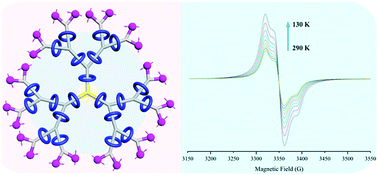
Chem. Commun., 2022,58, 2006-2009
https://doi.org/10.1039/D1CC06158E
Tweezer-type binding cavity formed by the helical folding of a carbazole–pyridine oligomer
Helical folding of a carbazole–pyridine oligomer generates a tweezer-type binding cavity which allows for the intercalation of a naphthalenediimide guest.
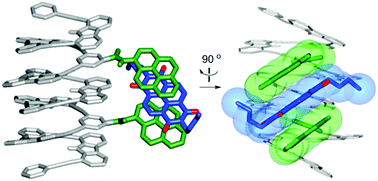
Chem. Commun., 2022,58, 1410-1413
https://doi.org/10.1039/D1CC06569F
Triple-stranded triptycene-based metallo-supramolecular helicate displaying efficient encapsulation of bulky guest molecules
A triple-stranded metallo-supramolecular helicate based on 2,7-disubstituted triptycene was easily constructed, and shows efficient encapsulation of quaternary ammonium guests.
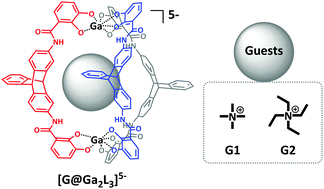
Chem. Commun., 2022,58, 1326-1329
https://doi.org/10.1039/D1CC05974B
Multi-NSAID-based Zn(II) coordination complex-derived metallogelators/metallogels as plausible multi-drug self-delivery systems
Metallogelators/metallogels derived from a series of NSAID-based Zn(II) coordination complexes have been developed as plausible multi-drug self-delivery systems.

Chem. Commun., 2022,58, 969-972
https://doi.org/10.1039/D1CC05334E
Biophysical and in silico characterization of NrtA: a protein-based host for aqueous nitrate and nitrite recognition
A combination of isothermal titration calorimetry experiments and molecular dynamics simulations reveal how the NrtA protein recognizes nitrate versus nitrite in water.

Chem. Commun., 2022,58, 965-968
https://doi.org/10.1039/D1CC05879G
A hydrogel with supramolecular surface functionalization for cancer cell capture and multicellular spheroid growth and release
A hydrogel scaffold with a non-fouling but specific cancer cell-adhesive surface fabricated via host–guest interactions captures cancer cells and promotes growth and release of multicellular spheroids.

Chem. Commun., 2022,58, 681-684
https://doi.org/10.1039/D1CC05846K
Silver nanoparticles modified by water-soluble leaning tower[6]arenes for sensing and catalysis
A hybrid nanoplatform was fabricated using a tower[6]arene sodium salt as a stabiliser on the surface of silver nanoparticles, showing good performance in catalysis and detection.
![Graphical abstract: Silver nanoparticles modified by water-soluble leaning tower[6]arenes for sensing and catalysis](/en/Image/Get?imageInfo.ImageType=GA&imageInfo.ImageIdentifier.ManuscriptID=D1CC06079A&imageInfo.ImageIdentifier.Year=2022)
Chem. Commun., 2022,58, 649-652
https://doi.org/10.1039/D1CC06079A
Pillararene-containing polymers with tunable fluorescence properties based on host–guest interactions
Linear polymers containing pillar[5]arenes as the pendant groups were designed and synthesized via a ring-opening metathesis polymerization. Such polymers could exhibit tunable fluorescence properties based on the host–guest interactions.
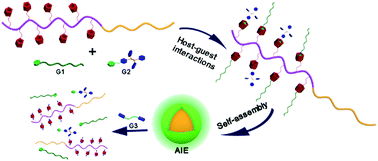
Chem. Commun., 2022,58, 581-584
https://doi.org/10.1039/D1CC05962A
Conductive and anti-freezing hydrogels constructed by pseudo-slide-ring networks
A pseudo-slide-ring network is introduced to enhance the hydrogel's mechanical performance, providing anti-freezing property and ionic conductivity.
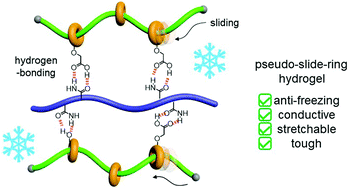
Chem. Commun., 2022,58, 250-253
https://doi.org/10.1039/D1CC05527E
Quickstart guide to model structures and interactions of artificial molecular muscles with efficient computational methods
Artificial molecular muscles are of interest in the nanosciences but their theoretical treatment is demanding. We present a standardized protocol on how to obtain reliable structures and free energies applying GFN quantum chemistry methods.

Chem. Commun., 2022,58, 258-261
https://doi.org/10.1039/D1CC05759F
Structure and hydration of polyvinylpyrrolidone–hydrogen peroxide
Hydrogen peroxide–PVP used in tooth whitening involves a chain of hydrogen bonded H2O2 molecules that can be selectively substituted by water molecules.

Chem. Commun., 2022,58, 80-83
https://doi.org/10.1039/D1CC06047C
Molecular recognition and photoprotection of riboflavin in water by a biomimetic host
A water-soluble tetralactam macrocycle is synthesized and characterized. This macrocycle is able to strongly bind riboflavin (Ka >107 M−1) in water and provides strong photoprotection of riboflavin upon UV irradiation.

Chem. Commun., 2021,57, 13724-13727
https://doi.org/10.1039/D1CC05818E
Host–guest complexation modulated aqueous polymerization-induced self-assembly for monodisperse hierarchical nanoflowers
This work presents the facile synthesis of monodisperse hierarchical nanoflowers by aqueous polymerization-induced self-assembly (PISA), modulated by host–guest interaction.
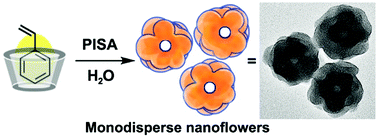
Chem. Commun., 2021,57, 13720-13723
https://doi.org/10.1039/D1CC05561E
Supramolecular capture of highly polar amidosquaraine dye in water with nanomolar affinity and large turn-on fluorescence
A high-affinity supramolecular dye-capture system with “turn on” visible fluorescence is used to create a new assay for phospholipase-mediated liposome leakage.
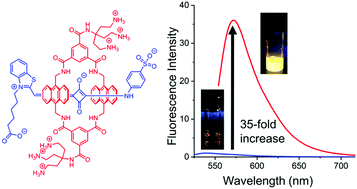
Chem. Commun., 2021,57, 13518-13521
https://doi.org/10.1039/D1CC05039G
Photoresponsive macrocycles for selective binding and release of sulfate
This work reports the synthesis of four photoresponsive macrocycles and their selective binding and release of SO42−via light irradiation.

Chem. Commun., 2021,57, 13514-13517
https://doi.org/10.1039/D1CC05506B
Metal-dependent selective formation of calix[4]arene assemblies based on dynamic covalent chemistry
Two imine-based calix[4]arene assemblies were selectively formed by changing the conformation of the precursor by Na+ binding; the flattened and spread cone conformations gave a macrocyclic trimer and a capsular-shaped dimeric cage, respectively.
![Graphical abstract: Metal-dependent selective formation of calix[4]arene assemblies based on dynamic covalent chemistry](/en/Image/Get?imageInfo.ImageType=GA&imageInfo.ImageIdentifier.ManuscriptID=D1CC05553D&imageInfo.ImageIdentifier.Year=2021)
Chem. Commun., 2021,57, 13510-13513
https://doi.org/10.1039/D1CC05553D
Threading of three rings on two stations: a convergent approach to [4]rotaxane
A novel approach to efficient and selective synthesis of [4]rotaxane with two stations was proposed to demonstrate the superiority of H-bonded azo-macrocycles in forging higher order rotaxanes.
![Graphical abstract: Threading of three rings on two stations: a convergent approach to [4]rotaxane](/en/Image/Get?imageInfo.ImageType=GA&imageInfo.ImageIdentifier.ManuscriptID=D1CC05501A&imageInfo.ImageIdentifier.Year=2021)
Chem. Commun., 2021,57, 13506-13509
https://doi.org/10.1039/D1CC05501A
Adhesion behaviour of bulk supramolecular polymers via pillar[5]arene-based molecular recognition
Pillar[5]arene–acid-based supramolecular adhesives with tough adhesion performances on different substrates were obtained.
![Graphical abstract: Adhesion behaviour of bulk supramolecular polymers via pillar[5]arene-based molecular recognition](/en/Image/Get?imageInfo.ImageType=GA&imageInfo.ImageIdentifier.ManuscriptID=D1CC05518F&imageInfo.ImageIdentifier.Year=2021)
Chem. Commun., 2021,57, 13317-13320
https://doi.org/10.1039/D1CC05518F
Bio-inspired AIE pillar[5]arene probe with multiple binding sites to discriminate alkanediamines
A pillar[5]arene functionalized with multiple binding sites can detect 1,8-diaminooctane, 1,10-diaminodecane, and 1,12-diaminododecane selectively and sensitively by using the AIE mechanism and the induced-fit mechanism.
![Graphical abstract: Bio-inspired AIE pillar[5]arene probe with multiple binding sites to discriminate alkanediamines](/en/Image/Get?imageInfo.ImageType=GA&imageInfo.ImageIdentifier.ManuscriptID=D1CC05153A&imageInfo.ImageIdentifier.Year=2021)
Chem. Commun., 2021,57, 13114-13117
https://doi.org/10.1039/D1CC05153A
Chiral recognition coupled with chemometrics using boronate ensembles containing D–π–A cyanostilbenes
Chemometrics-coupled chiral recognition was conducted with boronate ensembles containing D–π–A cyanostilbenes to determine and predict enantiomer excess for guest amines.
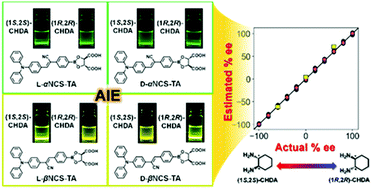
Chem. Commun., 2021,57, 12952-12955
https://doi.org/10.1039/D1CC05492A
Dendronized polydiacetylenes via photo-polymerization of supramolecular assemblies showing thermally tunable chirality
Dendronized polydiacetylenes showing thermoresponsiveness were fabricated via photopolymerization of assembled ribbons from amphiphilic dendronized diacetylene in aqueous solutions, which simultaneously showed thermally switchable chiralities.

Chem. Commun., 2021,57, 12780-12783
https://doi.org/10.1039/D1CC05358B
Multichannel dual protein sensing using amphiphilic supramolecular assemblies
A supramolecular dual protein sensing approach embedded with protein–ligand binding features and enzyme-cleavable moiety activating multichannel fluorescence signals via three different mechanisms.
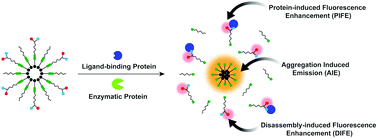
Chem. Commun., 2021,57, 12828-12831
https://doi.org/10.1039/D1CC05407D
Structurally screening calixarenes as peptide transport activators
We studied the influence of calixarene structure on transport efficiency of peptides, and provide meaningful information for transport systems.
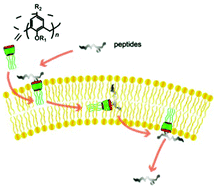
Chem. Commun., 2021,57, 12627-12630
https://doi.org/10.1039/D1CC05414G
Direct enhancement of intercomponent interactions in polyrotaxane and its pronounced effects on glass state properties
Intercomponent interactions in polyrotaxane glass influenced the mobility of the threading polymer confined in the glassy host framework, resulting in markedly different mechanical properties.
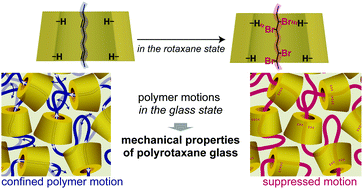
Chem. Commun., 2021,57, 12472-12475
https://doi.org/10.1039/D1CC05516J
Steric control of sorting regimes in self-assembled cages
Self-sorting regimes are controlled by adjusting steric interactions in self-assembled coordination cages and equilibration followed by HPLC. Statistical or biased distributions can be obtained, including isolation of a single heteroleptic species.
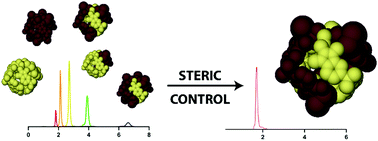
Chem. Commun., 2021,57, 12456-12459
https://doi.org/10.1039/D1CC05610G
Macrocyclic complexes based on [N⋯I⋯N]+ halogen bonds
Macrocyclic iodine(I) complexes with 5–10 Å cavity act as host molecules and encapsulate hexafluorophosphate anions in the gas phase confirmed by ion-mobility spectrometry and DFT calculations.
![Graphical abstract: Macrocyclic complexes based on [N⋯I⋯N]+ halogen bonds](/en/Image/Get?imageInfo.ImageType=GA&imageInfo.ImageIdentifier.ManuscriptID=D1CC05616F&imageInfo.ImageIdentifier.Year=2021)
Chem. Commun., 2021,57, 12464-12467
https://doi.org/10.1039/D1CC05616F
Polypseudorotaxanes constructed from pillar[5]arenes and polyamides by interfacial polymerization
Polypseudorotaxanes constructed from pillar[5]arene rings and polyamide chains were successfully synthesized by interfacial polymerization of polyamide in the presence of pillar[5]arene.
![Graphical abstract: Polypseudorotaxanes constructed from pillar[5]arenes and polyamides by interfacial polymerization](/en/Image/Get?imageInfo.ImageType=GA&imageInfo.ImageIdentifier.ManuscriptID=D1CC04491E&imageInfo.ImageIdentifier.Year=2021)
Chem. Commun., 2021,57, 12468-12471
https://doi.org/10.1039/D1CC04491E
Visualization of lipophagy using a supramolecular FRET pair
Host–guest interactions between rationally designed fluorescent probes enable the visualization of lipophagy in live cells.

Chem. Commun., 2021,57, 12179-12182
https://doi.org/10.1039/D1CC04779E
Charge neutral halogen bonding tetradentate-iodotriazole macrocycles capable of anion recognition and sensing in highly competitive aqueous media
Neutral tetradentate halogen bonding macrocycles bind a range of halide and dicarboxylate anion species in up to 40% water by volume containing aqueous-organic solvent media
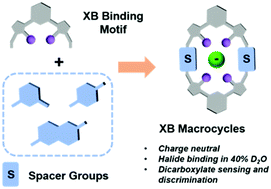
Chem. Commun., 2021,57, 11976-11979
https://doi.org/10.1039/D1CC05037K
[2.2]Paracyclophane-bridged platinum(II) complexes for silver(I) recognition with emission enhancement
A [2.2]paracyclophane-bridged bimetallic alkynylplatinum(II) terpyridyl complex displays severe emission quenching due to the presence of intramolecular π–π interactions.
![Graphical abstract: [2.2]Paracyclophane-bridged platinum(ii) complexes for silver(i) recognition with emission enhancement](/en/Image/Get?imageInfo.ImageType=GA&imageInfo.ImageIdentifier.ManuscriptID=D1CC04806F&imageInfo.ImageIdentifier.Year=2021)
Chem. Commun., 2021,57, 11996-11999
https://doi.org/10.1039/D1CC04806F
Self-sorting behavior in supramolecular fullerene polymerization directed by host–guest complexation between calix[5]arene and C60
Herein, we describe self-sorting supramolecular polymerization that uses chiral calix[5]arene hosts and a dumbbell-shaped fullerene guest.
![Graphical abstract: Self-sorting behavior in supramolecular fullerene polymerization directed by host–guest complexation between calix[5]arene and C60](/en/Image/Get?imageInfo.ImageType=GA&imageInfo.ImageIdentifier.ManuscriptID=D1CC05118K&imageInfo.ImageIdentifier.Year=2021)
Chem. Commun., 2021,57, 11831-11834
https://doi.org/10.1039/D1CC05118K
Stable pseudo[3]rotaxanes with strong positive binding cooperativity based on shape-persistent aromatic oligoamide macrocycles
Six-residue aromatic oligoamide macrocycles bind bipyridinium guest G to form stable, compact pseudo[3]rotaxanes with strong positive cooperativity.
![Graphical abstract: Stable pseudo[3]rotaxanes with strong positive binding cooperativity based on shape-persistent aromatic oligoamide macrocycles](/en/Image/Get?imageInfo.ImageType=GA&imageInfo.ImageIdentifier.ManuscriptID=D1CC05193H&imageInfo.ImageIdentifier.Year=2021)
Chem. Commun., 2021,57, 11645-11648
https://doi.org/10.1039/D1CC05193H
Turn on chemiluminescence-based probes for monitoring tyrosinase activity in conjunction with biological thiols
We report a chemiluminescent probe that permits the paired detection of tyrosinase (Tyr) and biological thiols. The Tyr-formed benzoquinone intermediate reacts with GSH and produces an enhanced chemiluminescence response.
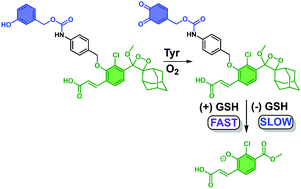
Chem. Commun., 2021,57, 11386-11389
https://doi.org/10.1039/D1CC05217A
Hierarchical protein self-assembly into dynamically controlled 2D nanoarrays via host–guest chemistry
A dynamically reversible two-dimensional (2D) protein assembly system was designed based on host–guest interactions.
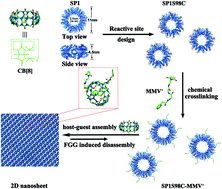
Chem. Commun., 2021,57, 10620-10623
https://doi.org/10.1039/D1CC03654H
Layered supramolecular network of cyclodextrin triplets with azobenzene-grafting polyoxometalate for dye degradation and partner-enhancement
A layered network supramolecular assembly is constructed by a tri-β-cyclodextrin-armed host and di-azobenzene-decorated polyoxometalate guest for degradation of selective dyes and partner-joined acceleration in water and dichloromethane in air.
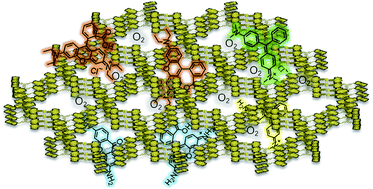
Chem. Commun., 2021,57, 10512-10515
https://doi.org/10.1039/D1CC04566K
Room-temperature phosphorescence of a water-soluble supramolecular organic framework
A porous water-soluble supramolecular organic framework efficiently exhibiting phosphorescence was developed both in an aqueous phase and in film state at room-temperature.

Chem. Commun., 2021,57, 10178-10181
https://doi.org/10.1039/D1CC04786H
Orientational self-sorting: formation of structurally defined Pd4L8 and Pd6L12 cages from low-symmetry dipyridyl ligands
Structurally defined Pd4L8 and Pd6L12 coordination cages are obtained from low-symmetry dipyridyl ligands.

Chem. Commun., 2021,57, 10023-10026
https://doi.org/10.1039/D1CC03828A
Biodegradable supramolecular micelles via host–guest interaction of cyclodextrin-terminated polypeptides and adamantane-terminated polycaprolactones
Supramolecular polymer micelles are formed by host–guest interaction of cyclodextrin- and adamantane-terminated polypeptides and polycaprolactones. Enzyme degradation of the micelles leads to a controlled release of payload.
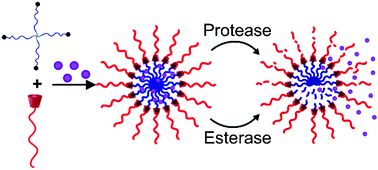
Chem. Commun., 2021,57, 9446-9449
https://doi.org/10.1039/D1CC03372G
Recognition of hydrophilic molecules in deep cavitand hosts with water-mediated hydrogen bonds
A new supramolecular system was constructed based on water-mediated hydrogen bonding between a benzimidazole functionalized host, water and guest. Intriguingly, these hosts can recognize small hydrophilic guests in water through the synergistic action of water-mediated hydrogen bonding and hydrophobic effects.

Chem. Commun., 2021,57, 8147-8150
https://doi.org/10.1039/D1CC02505H
Pillar[5]arene-based supramolecular photosensitizer for enhanced hypoxic-tumor therapeutic effectiveness
A galactose-targeting supramolecular photosensitizer system DOX@GP5⊃NBSPD was constructed based on a host–guest inclusion complex, which could achieve the enhanced hypoxic-tumor therapeutic effectiveness by chemo-photodynamic combination.
![Graphical abstract: Pillar[5]arene-based supramolecular photosensitizer for enhanced hypoxic-tumor therapeutic effectiveness](/en/Image/Get?imageInfo.ImageType=GA&imageInfo.ImageIdentifier.ManuscriptID=D1CC02959B&imageInfo.ImageIdentifier.Year=2021)
Chem. Commun., 2021,57, 7625-7628
https://doi.org/10.1039/D1CC02959B
Synergistic covalent-and-supramolecular polymers connected by [2]pseudorotaxane moieties
Synergistic covalent-and-supramolecular polymers connected by [2]pseudorotaxane moieties are designed and synthesized, whose unique topological structures lead to materials with mechanically adaptive properties.
![Graphical abstract: Synergistic covalent-and-supramolecular polymers connected by [2]pseudorotaxane moieties](/en/Image/Get?imageInfo.ImageType=GA&imageInfo.ImageIdentifier.ManuscriptID=D1CC02873A&imageInfo.ImageIdentifier.Year=2021)
Chem. Commun., 2021,57, 7374-7377
https://doi.org/10.1039/D1CC02873A
Pyrrole-bridged quinones: π-electronic systems that modulate electronic structures by tautomerism and deprotonation
A new series of π-extended quinone derivatives containing a pyrrole bridge exhibited NH/OH-type tautomerization and anion binding along with deprotonation that induced near-infrared absorption and ion-pairing assemblies.

Chem. Commun., 2021,57, 6983-6986
https://doi.org/10.1039/D1CC02691G
Pillararene-enriched linear conjugated polymer materials with thiazolo[5,4-d]thiazole linkages for photocatalysis
A conjugated polymer material integrated with pillararenes and codoped with heteroatoms was constructed for band-structure engineering and photocatalytic dye degradation.
![Graphical abstract: Pillararene-enriched linear conjugated polymer materials with thiazolo[5,4-d]thiazole linkages for photocatalysis](/en/Image/Get?imageInfo.ImageType=GA&imageInfo.ImageIdentifier.ManuscriptID=D1CC02373J&imageInfo.ImageIdentifier.Year=2021)
Chem. Commun., 2021,57, 6546-6549
https://doi.org/10.1039/D1CC02373J
Measuring anion transport selectivity: a cautionary tale
pH-dependent liposomal assays are often used to determine anion selectivity in transmembrane anion transport experiments. In this communication, we discuss the validity and limitations of these assays, and provide guidelines for their use to avoid misleading results.

Chem. Commun., 2021,57, 3979-3982
https://doi.org/10.1039/D1CC01038G
About this collection
Our vision is that this web collection will provide a showcase of current achievements while providing a springboard for future success in the field of host-guest chemistry. This collection, Guest Edited by Feihe Huang (Zhejiang University), Jonathan L. Sessler (The University of Texas at Austin), and Tomoki Ogoshi (Kyoto University), will cover not only host-guest complexes based on crown ethers, cyclodextrins, calixarenes, cucurbiturils, calixpyrroles, pillararenes, and other macrocyclic hosts, but also more complex supramolecular systems such as molecular switches, molecular machines, supramolecular polymers, supramolecular macromolecules and gels, macrocyclic amphiphiles, supra-amphiphiles, supra-monomers, supramolecular radicals, nonporous adaptive crystals, and other supramolecular materials based on host-guest chemistry. The collection will provide a spectrum of contributions that run the gamut from fundamental science all the way to real world applications involving areas as diverse as gene/drug delivery, smart/adaptive materials, devices, adsorption phenomena, separations, supramolecular chemotherapy, supramolecular cancer nanotheranostics, supramolecular analytical chemistry, information storage, coding and anti-counterfeitting, as well as supramolecular medicinal chemistry, to name a few of the many opportunities that are currently being perused. This collection intends to set a standard of excellence that will inspire current practitioners while attracting new researchers into the field.